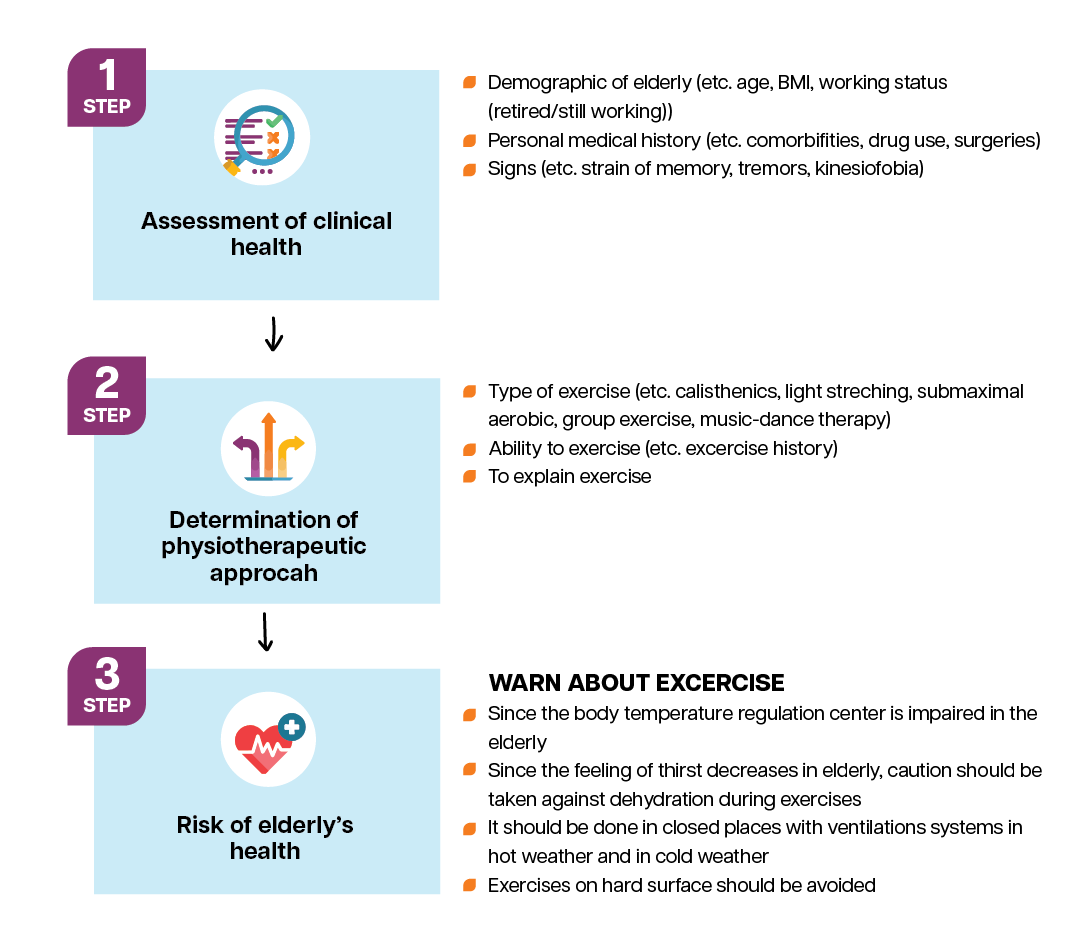Reading material on improving movement analysis and therapy
Mental and physical health of the elderly (assessment and therapeutic approach)
Appropriate physiotherapeutic approaches with confident steps for healthy aging; calisthenic exercises, music-dance therapy, cognitive exercises, etc. is tried to be found. When making such a decision, a balance should be achieved between the current clinical condition of the elderly person and his or her physical activity level. The clinical condition of the elderly is; Physical health and mental health are evaluated to ensure that there are no diseases or disorders.
One of our recommendations for the evaluation of cognitive function is the Mini Mental Test and MOCA. Mini Mental Test allows you to practically evaluate cognitive functions in approximately 10 minutes. Mini-mental test performance typically declines with older age. People with higher education levels can get higher scores. Therefore, the results may need to be interpreted by taking into account factors such as the person’s age, educational status, and ethnicity. (This is where cross-cultural factors come into play.) Mini-mental test scores can range from 0-30. Scores of 25 and above are considered normal. A score of less than 10 indicates serious impairment. Scores between 10 and 19 are indicative of moderate dementia. Scores between 19 and 24 indicate early stage dementia.
We recommend MOCA as another cognitive function assessment test. The Montreal Cognitive Assessment (MoCA) was developed as a rapid screening test for mild cognitive impairment. MoCA evaluates different cognitive functions. These; attention and concentration, executive functions, memory, language, visual structuring skills, abstract thinking, calculation and orientation. MoCA application takes approximately 10 minutes. The highest total score that can be obtained from the test is 30. Accordingly, a score of 21 points or above is considered normal.
It is accepted that the old age criteria, which generally begin to emerge in the 60s, settle towards the 80s. As a result, older adults become inactive and, accordingly, muscle mass decreases and fat tissue increases. For this reason, malnutrition evaluation should be performed routinely once a year (This issue will be discussed in the multidisciplinary approach). All of these can cause an increase in body weight.
Social discrimination based on chronological or assumed age is very common in social life. This situation is more evident in active living and the result is aging. As we get older, the excessive thought that the body needs to be protected further aggravates this process. Perceiving the signs of the aging process and increasing diseases as normal aging is not normal, but rather indicates a passive and accepted situation. What should be targeted is active aging rather than normal aging. This requires an active individual life and healthy eating habits, as well as social and social policy changes. Social isolation, feeling of loneliness, depression, loss of peers cause physical inactivity and sedentary life in the elderly. In addition to physiological changes in their bodies, immobility and self-limitation in daily living activities can affect physical health. Physical activity levels should also be evaluated for healthy aging. Timed Up and Go Test (TUG) can be used to evaluate physical performance. It is the measurement of the time it takes for the elderly person to stand up upon the physiotherapist’s start command while sitting in a chair, walk around a point 3 meters away, and sit down on the chair again. More than 15 seconds is an indicator of risk of falling.
Exercise increases muscle strength and flexibility, improves cardiovascular and respiratory system functions, and has purposes such as meeting daily energy and motivation needs, socializing, and making the mood happy. As a result of all these, older adults can spend their old age healthier and happier. In this context, healthy aging of the elderly is possible if both physical and mental health are present. Calisthenic exercise approaches and light stretching exercises are suitable to protect and improve physical health, increase mobility and prevent sedentary. By performing submaximal aerobic and ‘calisthenic exercises’; Exercises can improve physical fitness, cognitive performance and quality of life. It is recommended to apply it for an average of 45-50 minutes a day, 3 days a week, for 4 months and under the supervision of a physiotherapist. Additionally, studies have shown significant improvements in calisthenic exercises, especially in immediate memory and learning functions [4].
While physical exercise improves spatial learning in healthy individuals, it may also have a protective effect against the cognitive decline that comes with aging. Individuals with higher levels of physical fitness can use their cognitive abilities more flexibly to meet the requirements of the environment they encounter. Although declines in cognitive processes begin in middle age, it is stated that regular physical exercise can reverse this situation [5]. The increase in BDNF with physical exercise is thought to be one of the main reasons for the positive effect on the cognitive properties of the elderly. BDNF is a basic protein, a member of the neurotrophin family, and has a crucial role in neurobiology as it positively interferes with structural and functional plasticity on the central nervous system (CNS) [6] . In particular, the BDNF protein is vital for cognitive performance in the short term and adaptations in brain morphology (e.g. plasticity) in the long term [7].



Leave a Reply
Want to join the discussion?Feel free to contribute!